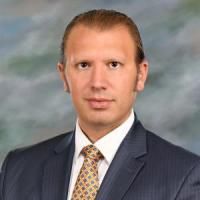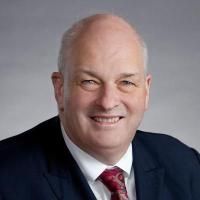The gap between surgeon goal and achieved sagittal alignment in adult cervical spine deformity surgery.
Date
2025-01
Journal Title
Journal ISSN
Volume Title
Repository Usage Stats
views
downloads
Citation Stats
Attention Stats
Abstract
Objective
Malalignment following cervical spine deformity (CSD) surgery can negatively impact outcomes and increase complications. Despite the growing ability to plan alignment, it remains unclear whether preoperative goals are achieved with surgery. The objective of this study was to assess how good surgeons are at achieving their preoperative goal alignment following CSD surgery.Methods
Adult patients with CSD were prospectively enrolled into a multicenter registry. Surgeons documented alignment goals prior to surgery, including C2-7 sagittal vertical axis (SVA), C2-7 sagittal Cobb angle, T1 slope minus cervical lordosis (TS-CL), and C7-S1 SVA. Goals were compared with achieved alignment, and the offsets (achieved goal) were calculated. General linear models were created for offset magnitude for each alignment parameter, controlling for baseline deformity and surgical factors.Results
The 88 enrolled patients had a mean age of 63.6 ± 13.0 years. The mean number of anterior and posterior instrumented levels was 3.5 ± 1.0 and 10.6 ± 4.5, respectively. Surgeons failed to achieve their preoperative alignment goals by an average of 17.2 (range 0.1-75.4) mm for C2-7 SVA, 10.3° (range 0.1°-45.5°) for C2-7 sagittal Cobb angle, 15.6° (range 0.0°-42.9°) for TS-CL, and 34.2 (range 0.3-113.7) mm for C7-S1 SVA. The sagittal alignment parameters with the highest rate of extreme outliers were TS-CL and C7-S1 SVA, with 32.2% exceeding 20° and 60.8% exceeding 20 mm from goal alignment, respectively. After controlling for baseline deformity and operative parameters, the only factor associated with achieving targeted alignment for C2-7 sagittal Cobb angle was greater baseline thoracic kyphosis (TK; B = -0.148, 95% CI -0.288 to -0.007, p = 0.040), and for TS-CL, the only associated factor was lower baseline TS-CL (B = 0.187, 95% CI 0.027-0.347, p = 0.022). Both lower TK and greater TS-CL may reflect increased baseline deformity through greater thoracic compensation and increased TS-CL mismatch, respectively. No significant associations were identified for C2-7 SVA and C7-S1 SVA.Conclusions
Surgeons failed to achieve their preoperative alignment goals by an average of 17.2 mm for C2-7 SVA, 10.3° for C2-7 sagittal Cobb angle, 15.6° for TS-CL, and 34.2 mm for C7-S1 SVA. The few factors identified that were associated with offset between goal and achieved alignment suggest that achievement of goal alignment was most challenging for more severe deformities. Further advancements are needed to enable more consistent translation of preoperative alignment goals into the operating room for adult CSD correction. Clinical trial registration no.: NCT01588054 (ClinicalTrials.gov).Type
Department
Description
Provenance
Subjects
Citation
Permalink
Published Version (Please cite this version)
Publication Info
Smith, Justin S, David Ben-Israel, Michael P Kelly, Virginie Lafage, Renaud Lafage, Eric O Klineberg, Han Jo Kim, Breton Line, et al. (2025). The gap between surgeon goal and achieved sagittal alignment in adult cervical spine deformity surgery. Journal of neurosurgery. Spine. pp. 1–11. 10.3171/2024.8.spine24703 Retrieved from https://hdl.handle.net/10161/32041.
This is constructed from limited available data and may be imprecise. To cite this article, please review & use the official citation provided by the journal.
Collections
Scholars@Duke

Peter Passias
Throughout my medical career, I have remained dedicated to improving my patients' quality of life. As a specialist in adult cervical and spinal deformity surgery, I understand the significant impact our interventions have on individuals suffering from debilitating pain and physical and mental health challenges. Spinal deformity surgery merges the complexities of spinal biomechanics with the needs of an aging population. My research focuses on spinal alignment, biomechanics, innovative surgical techniques, and health economics to ensure value-based care that enhances patient outcomes.

Christopher Ignatius Shaffrey
I have more than 25 years of experience treating patients of all ages with spinal disorders. I have had an interest in the management of spinal disorders since starting my medical education. I performed residencies in both orthopaedic surgery and neurosurgery to gain a comprehensive understanding of the entire range of spinal disorders. My goal has been to find innovative ways to manage the range of spinal conditions, straightforward to complex. I have a focus on managing patients with complex spinal disorders. My patient evaluation and management philosophy is to provide engaged, compassionate care that focuses on providing the simplest and least aggressive treatment option for a particular condition. In many cases, non-operative treatment options exist to improve a patient’s symptoms. I have been actively engaged in clinical research to find the best ways to manage spinal disorders in order to achieve better results with fewer complications.
Unless otherwise indicated, scholarly articles published by Duke faculty members are made available here with a CC-BY-NC (Creative Commons Attribution Non-Commercial) license, as enabled by the Duke Open Access Policy. If you wish to use the materials in ways not already permitted under CC-BY-NC, please consult the copyright owner. Other materials are made available here through the author’s grant of a non-exclusive license to make their work openly accessible.
